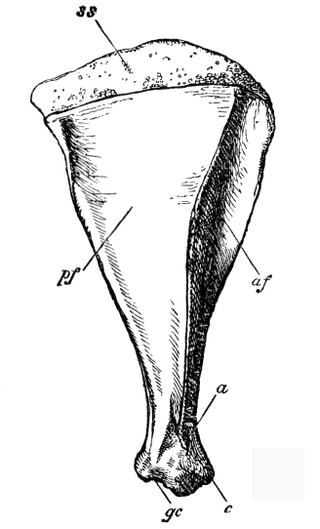
Divination is the attempt to gain insight into a question or situation by way of an occultic ritual or practice. Using various methods throughout history, diviners ascertain their interpretations of how a querent should proceed by reading signs, events, or omens, or through alleged contact or interaction with supernatural agencies such as spirits, gods, god-like-beings or the "will of the universe".

Magic is an ancient practice rooted in rituals, spiritual divinations, and/or cultural lineage—with an intention to invoke, manipulate, or otherwise manifest supernatural forces, beings, or entities in the natural world. It is a categorical yet often ambiguous term which has been used to refer to a wide variety of beliefs and practices, frequently considered separate from both religion and science.

Necromancy is the practice of magic involving communication with the dead by summoning their spirits as apparitions or visions for the purpose of divination; imparting the means to foretell future events and discover hidden knowledge. Sometimes categorized under death magic, the term is occasionally also used in a more general sense to refer to black magic or witchcraft as a whole. In fictional settings such as Dungeons & Dragons, or fantasy video games, it is associated with the reanimation of corpses often meant to be used as weapons.

Pyromancy is the art of divination by means of fire or flames.

Scrying, also referred to as "seeing" or "peeping," is a practice rooted in divination and fortune-telling. It involves gazing into a medium, hoping to receive significant messages or visions that could offer personal guidance, prophecy, revelation, or inspiration. The practice lacks a definitive distinction from other forms of clairvoyance or divination but generally relies on visions within the chosen medium. Unlike augury, which interprets observable events, or divination, which follows standardized rituals, scrying's impressions arise within the medium itself.

Spodomancy is a form of divination by examining cinders, soot, or ashes, particularly although not exclusively from a ritual sacrifice. Spodomancy has been practiced by numerous cultures, ancient and modern, across the globe. While many practitioners have performed the ritual as part of a formal system of paranormal, religious, or ceremonial magic, many have done so as part of mere folkloric practice or superstition.
Daphnomancy is a form of pyromancy whereby the future is predicted by burning bay laurel leaves. A loud crackling from the fire is a positive omen, whereas silence is a negative one.
Lithomancy is a form of divination by which the future is told using stones or the reflected light from the stones. The practice is most popular in the British Isles.
Apantomancy is a form of divination using articles at hand or things that present themselves by chance. The diviner works him/herself into a state of trance until an object or event is perceived and a divination worked out. This form of divination was used in ancient Rome by the augurs. There is no set of standard interpretations in apantomancy, with the interpretations of events depending on the background of the seer.

Scapulimancy is the practice of divination by use of scapulae or speal bones. It is most widely practiced in China and the Sinosphere as oracle bones, but has also been independently developed in other traditions including the West.

Smudging, or other rites involving the burning of sacred herbs or resins, is a ceremony practiced by some Indigenous peoples of the Americas. While it bears some resemblance to other ceremonies and rituals involving smoke from other world cultures, notably those that use smoke for spiritual cleansing or blessing, the purposes and particulars of the ceremonies, and the substances used, can vary widely among tribes, bands, and nations, and even more so among different world cultures. In traditional communities, Elders maintain the protocols around these ceremonies and provide culturally specific guidance. The smudging ceremony, by various names, has been used by others outside of the Indigenous communities as part of New Age or commercial practices, which has also led to the over-harvesting of some of the plants used in ceremonies. Indigenous people in the US and Canada have argued against appropriation and over-harvesting of white sage.

Catoptromancy, also known as captromancy or enoptromancy, is divination using a mirror.

Panchamakara or Panchatattva, also known as the Five Ms, is the Tantric term for the five substances used in a Tantric practice. These are madya (alcohol), māṃsa (meat), matsya (fish), mudrā (grain), and maithuna. Taboo-breaking elements are only practiced literally by "left-hand path" tantrics (vāmācārins), whereas "right-hand path" tantrics (dakṣiṇācārins) oppose these.
Maya medicine concerns health and medicine among the ancient Maya civilization. It was a complex blend of mind, body, religion, ritual and science. Important to all, medicine was practiced only by a select few, who generally inherited their positions and received extensive education. These shamans acted as a medium between the physical world and spirit world. They practiced sorcery for the purpose of healing, foresight, and control over natural events. Since medicine was so closely related to religion, it was essential that Maya medicine men had vast medical knowledge and skill.

There is some evidence that, in addition to being a writing system, runes historically served purposes of magic. This is the case from the earliest epigraphic evidence of the Roman to the Germanic Iron Age, with non-linguistic inscriptions and the alu word. An erilaz appears to have been a person versed in runes, including their magic applications.
Religious use of incense has its origins in antiquity. The burned incense may be intended as a symbolic or sacrificial offering to various deities or spirits, or to serve as an aid in prayer.

A superstition is any belief or practice considered by non-practitioners to be irrational or supernatural, attributed to fate or magic, perceived supernatural influence, or fear of that which is unknown. It is commonly applied to beliefs and practices surrounding luck, amulets, astrology, fortune telling, spirits, and certain paranormal entities, particularly the belief that future events can be foretold by specific unrelated prior events.

Judika Illes is an American author of esoteric non-fiction books, aromatherapist and tarot reader.

Greek divination is the divination practiced by ancient Greek culture as it is known from ancient Greek literature, supplemented by epigraphic and pictorial evidence. Divination is a traditional set of methods of consulting divinity to obtain prophecies (theopropia) about specific circumstances defined beforehand. As it is a form of compelling divinity to reveal its will by the application of method, it is, and has been since classical times, considered a type of magic. Cicero condemns it as superstition. It depends on a presumed "sympathy" between the mantic event and the real circumstance, which he denies as contrary to the laws of nature. If there were any sympathy, and the diviner could discover it, then "men may approach very near to the power of gods."

African divination is divination practiced by cultures of Africa.















